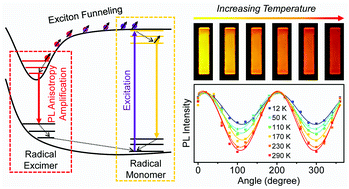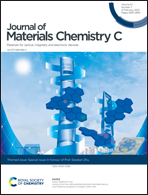Exciton funneling amplified photoluminescence anisotropy in organic radical-doped microcrystals†
Abstract
We demonstrate a controllable photoluminescence anisotropy amplification in organic luminescent radical-doped microcrystals via exciton funneling. The widely tunable doping ratio resulting from very similar molecular structures between hosts and guests leads to a freely tailorable exciton funneling process, which paves an avenue for the construction of high-performance polarizing optical elements.

- This article is part of the themed collection: Special issue in honour of Daoben Zhu


 Please wait while we load your content...
Please wait while we load your content...